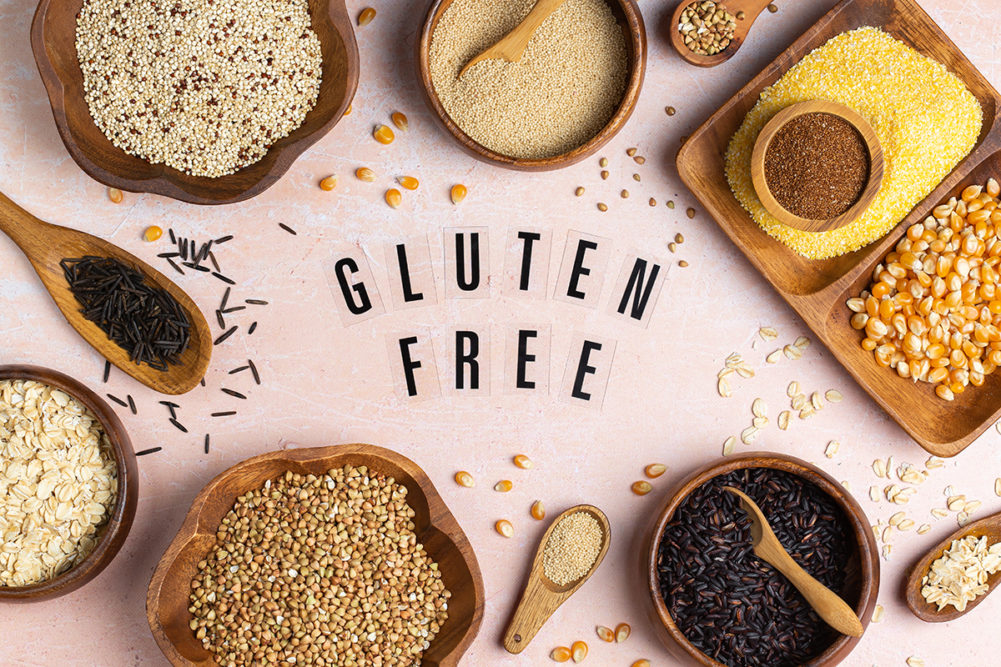KANSAS CITY — Formulators know to choose ingredients that provide the desired texture and flavor in gluten-free products. They also may consider ingredients consumers know about and view favorably.
Consumers are familiar with oats and quinoa, both gluten-free grains, along with chickpeas (pulses), providing reasons to promote those ingredients on packaging, said Matthew Schueller, director of marketing insights and analytics at Ardent Mills, Denver.
According to Ardent Mills’ proprietary research, oat ranks highest with 97% of consumers stating that they are familiar with it while 94% state they are familiar with chickpeas and 84% claim to be familiar with quinoa.
“However, if we look at the impact that the ingredient has on consumer purchasing intent, we can also include buckwheat amongst gluten-free grains rising in popularity.”
Buckwheat trending
Whole Foods Market, Austin, Texas, listed buckwheat among its top 10 trends for 2024. It contains protein, carbohydrates and fiber — but no gluten — and may be used in applications ranging from plant-based milk alternatives to crackers and granola, according to Whole Foods Market. Soba noodles may contain buckwheat, too.
A survey this year from the Whole Grains Council, Boston, found 27% of respondents said they had eaten buckwheat, which was up from 23% in a 2021 survey. More than 60% said they had heard of buckwheat, which compared with oats at over 80% and quinoa at over 70%.
ResearchandMarkets.com, Dublin, forecast the global gluten-free oats market to have a compound annual growth rate of nearly 13% from 2022-28, rising to $586 million from $288 million. Gluten-free oats contain vitamins and minerals. Breakfast cereal, baked foods and snacks all have contributed strongly to market growth.
Many companies are responding specifically to the call for gluten-free options in the snack and bakery category, said Matt Goldstein, research and development scientist for Ardent Mills.
“Ingredients like oat, quinoa and chickpeas can be incorporated into many different applications, but where they particularly shine is in crackers and cookies,” he said. “Within these applications, they can be used at higher levels, which may add to the nutritional value of the product. We also see them performing particularly well in breadings used in an emerging, ‘better-for-you’ category that includes frozen proteins, like chicken strips or fish sticks.”
Formulators need to incorporate the correct amount of moisture into the dough to prevent cracking and to achieve proper spreading in gluten-free products.
“Because of that, it is key to adjust the time and temperature to bake off the excess moisture and reach the desired finished product quality,” Mr. Goldstein said. “Market insight research has revealed that consumers do not necessarily expect baked goods containing alternative grains and pulses to exactly match wheat-based baked goods, but they do expect these products to taste good and to be of high quality.”
Teff’s potential
Only 6% of respondents in the Whole Grains Council survey said they had heard of teff, but the percentage was up from 4% in the 2021 survey.
The Teff Co., Boise, Idaho, has supplied Ethiopian and Eritrean communities in the United States for nearly 30 years with American-grown Maskal teff, which is available nationally in health food stores and from the company website.
“The Ethiopian and Eritrean communities have really been our most important partners for the entire life of the company, and we see that important relationship continuing,” said Royd Carlson, agriculture manager and marketing manager, for Teff Co. “However, teff is very versatile and has some characteristics that are becoming more valued by other customers as they become aware of teff.
“The biggest areas of interest and growth we are seeing are in the gluten-free market, as well as among customers looking for a healthy ingredient that is also versatile and tastes nice. We have found that as people are introduced to teff, they are very excited by the taste and nutrition, and we think there is a lot of opportunity for new teff products.”
Wayne Carlson, Royd’s father, visited Ethiopia in the early 1970s. Back in Idaho, he noticed the similarities of the Snake River valley and the Rift Valley’s climates and geology in East Africa. Both regions face hot summers with intense sunlight.
The Teff Co. operates out of a teff-only facility and, to reduce the risk of gluten commingling from nearby fields or shared equipment, tests all lots down to levels of 5 parts per million (ppm) of gluten, which compares to the US Food and Drug Administration gluten-free requirements of 20 ppm. One cup of teff contains 123 mg of calcium as well as resistant starch.
“Teff works very well in denser products like pancakes, waffles, tortillas, brownies or cookies,” Royd Carlson said. “The grain also works very well as a porridge or added to bread for additional texture.”

